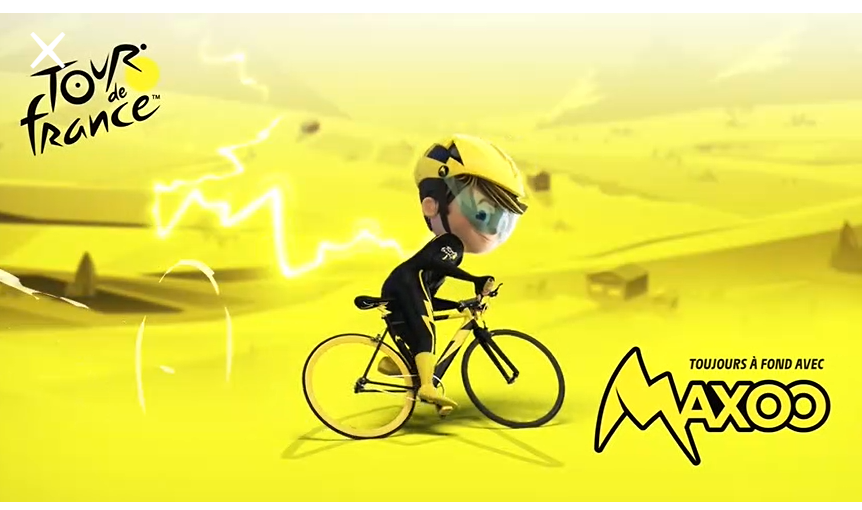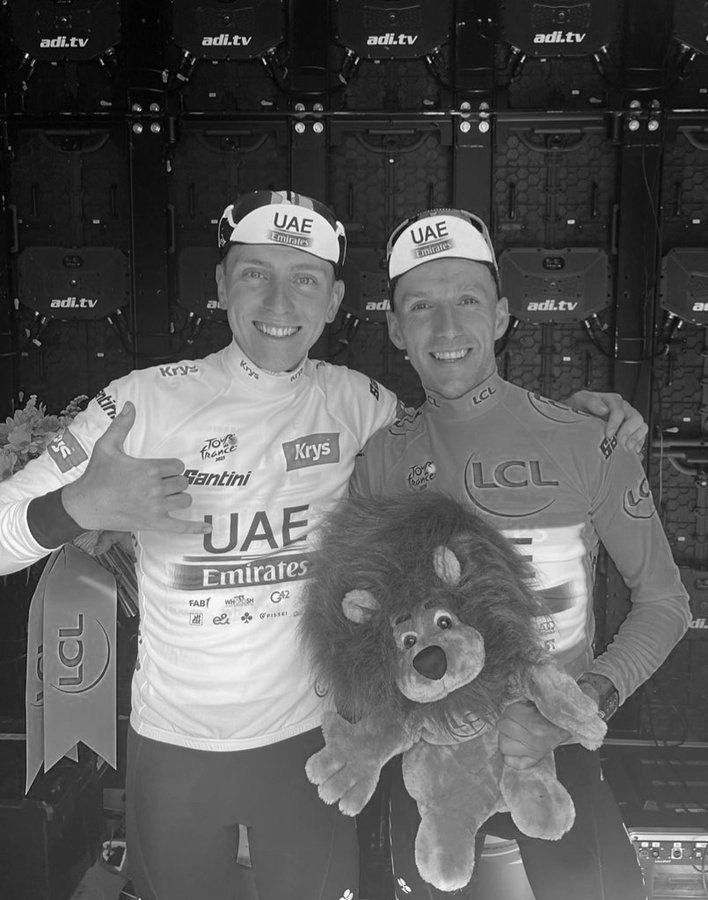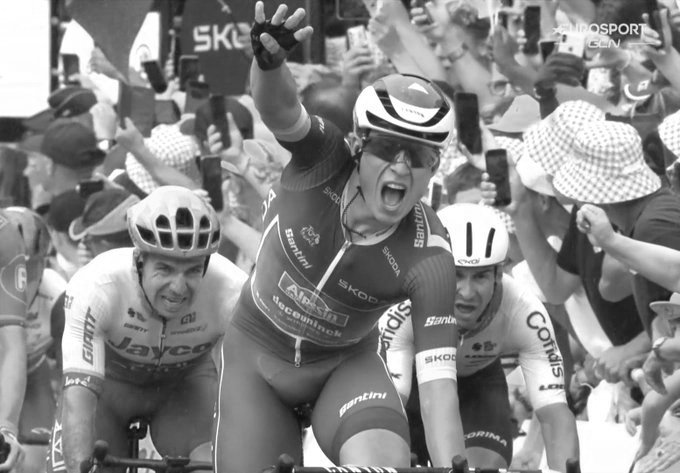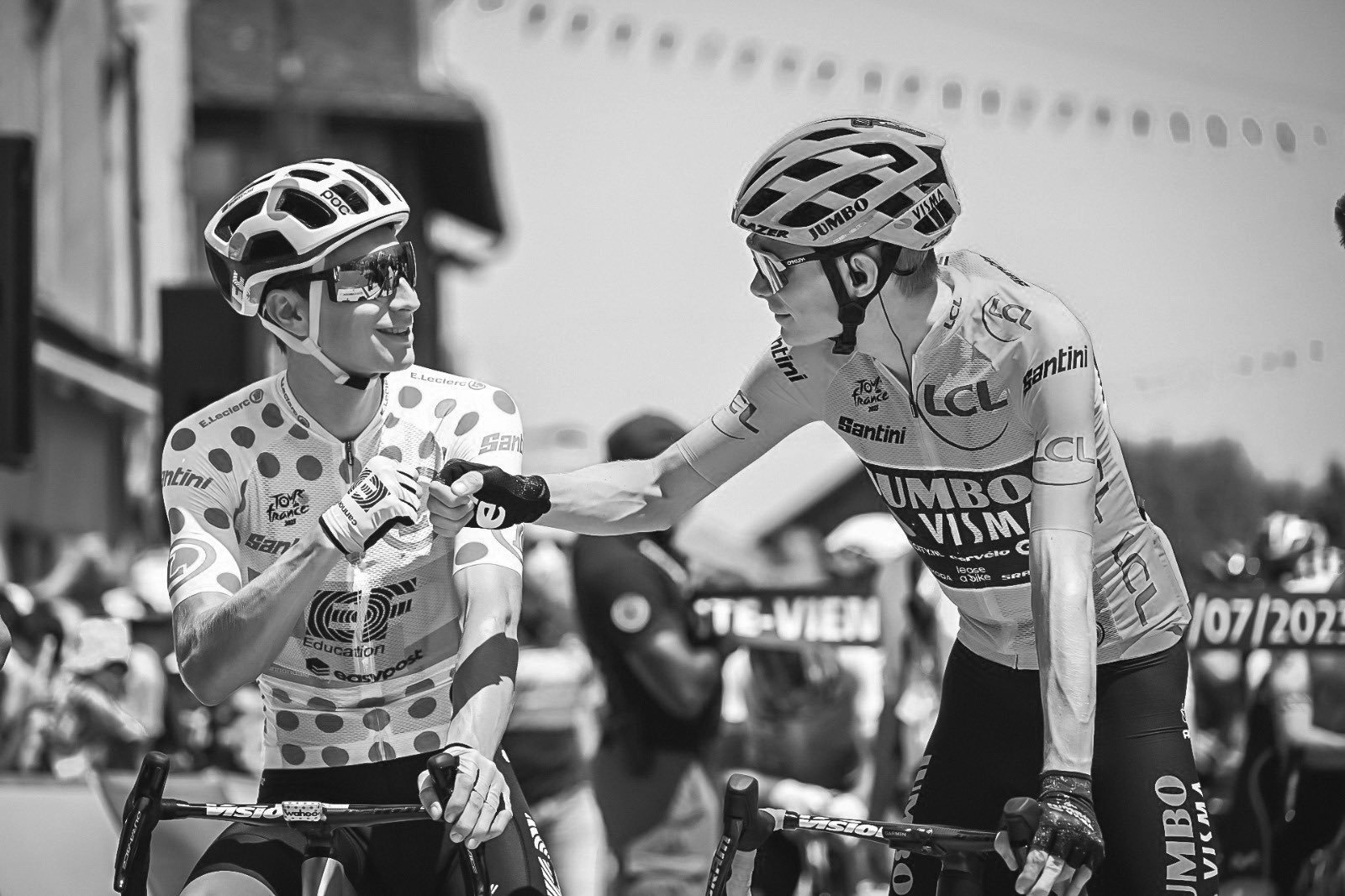FAQ: Tour de France
The 2023 Edition
Pogacar and Yates flashing the Leon hardware…When and where is the Tour de France?
The Grand Tour is held every summer in France (with occasional stage visits to other countries) since 1903, except for editions canceled due to World War I and World War II. The 2023 edition begins July 1st and finishes July 23rd. The Grand Départ will take place in the Basque region of Spain and remain in the host country until the finish of Stage 3. Thereupon the race returns to France, finishing through to the final 21st stage with the traditional ride into Paris on the Champs Elysées.
What is the Tour de France route?
The route consists of 21 stages and changes each year. Organizers will try to introduce the optimal mix of stages: time trials, hills and mountains, sprints. What counts as ‘optimal’ is subject for debate, given that different teams have different strengths. But the ideal is a mix of stage types that will generate good competition for the different prize jerseys.
It’s now quite common for the Tour to have its Grand Départ outside France. Typically, this is just about money – the highest bidder will win the right to stage the start. Maybe one stage, maybe a few stages like the 2023 Grand Depart in the Basque region of Spain.
The starting and finishing locations of each individual stage are also up for bidding. If a town or city wants a little boost to the tourist economy, submitting a bid can make sense. Of course, the organizers of the Tour de France are also trying to balance high bids with a certain race topography and cultural history, so assembling the perfect route is a little art, a little science, and a little business.
How can I watch the Tour de France?
The main option for viewers in the US is streaming the race via Peacock. Peacock will offer both the USA coverage and its own unabridged version (“World Feed”) of each stage.
GCN+ offers great coverage as well, though depending on your region you will or will not have access to the Tour de France.
If you search further around the internet you can occasionally find decent foreign feeds to enjoy a different commenting culture. European commentators tend to have greater liberty to drill deep into the history of the sport, the landscape, and cycling tactics than their American counterparts. If you know how to operate a VPN, your viewing options will likely multiply.
What is the yellow jersey?
The yellow jersey is awarded after each stage to the rider with the lowest cumulative time throughout the race so far. The yellow jersey is the most prestigious jersey (there are other jerseys) and the wearer of the yellow jersey after the final stage 21 is the overall winner of the Tour de France.
What are the other Tour de France jerseys?
The green and yellow jersey share a wordThe Tour de France is many races in one. Besides the yellow jersey, riders are also competing for the green, polka dot, and white jersey throughout.
The green jersey designates the current leader in the points classification. Riders can earn points throughout the Tour by winning intermediate sprints, sprinkled in the meaty middle of most stages, and by placing strongly in stages. The wearer of the green jersey after the final stage 21 is the overall winner of the points classification.
Julian Alaphilippe celebrates his time in the polka dot jerseyThe polka dot jersey identifies the current leader in the mountain classification. Mountain climbs along the routes are designated as worth a certain amount of points. The first to the top of these mountains gets the bulk of the points, with some points left over for the remaining riders. The wearer of the polka dot jersey after the final stage 21 is the overall winner of the mountain classification.
The white jersey is the “Young Rider” classification. The rider (25 or under) with the best cumulative time at the end of each stage claims the white jersey. The wearer of the white jersey after the final stage 21 is the overall winner of the young rider classification.
How do teams work in the Tour de France?
Cycling is a team sport and the strongest teams will have good depth of talent and good team tactics. But different teams have different goals, so what counts as good depth and tactics will differ.
If your team has a strong contender for the yellow jersey – your GC guy, general classification – you will want to surround him with the right mix of auxiliary riders to help him stay competitive and fend off counterattacks over the grueling three weeks of the race. A rider to protect him in strong winds. A rider to guide him down dangerous ascents. A rider to motivate him up steep climbs. A whole slew of strong riders to tire out opposing teams with unmatchable pacesetting.
If your team does not possess a serious contender for the yellow jersey, you might be thinking about individual stage wins, the green jersey, the polka dot jersey, or at the very least getting your sponsor’s brand on TV during long and heroic and totally unrealistic breakaway salvos. All of these outcomes are richly prized in professional cycling and call for thoughtful team building and strategy.
Who is Maxoo?
Maxoo is a swollen-headed plush freak that stalks the roadside at the Tour de France. He haunts the nightmares of children and adults alike. Maxoo wants to be your friend to the end. It’s unclear what Maxoo’s status is in 2023 — the last time the Tour promoted him was in 2021.












Recaps of Stages 16-21 as the 2023 Tour de France concludes in Paris.